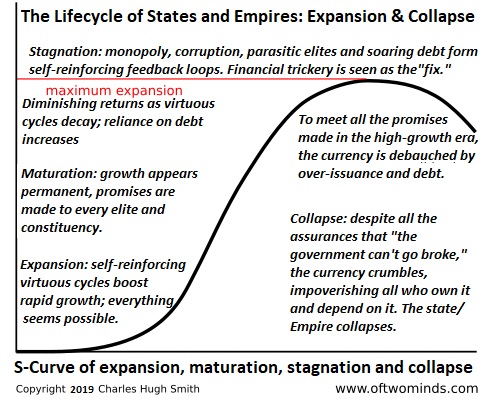December 9, 2019
The higher up the wealth-power pyramid the observer is, the more prone they are to a magical-thinking belief that the empire is forever, even as it is crumbling around them.
How great nations and empires arise, mature, decay and collapse has long been of interest for a self-evident reason: if we can discern a template or process, we can predict when the great nations and empires of today will slide into the dustbin of history.
One of the justly famous attempts to lay out the stages of expansion, zenith, decline and collapse is Sir John Glubb's 1978 The Fate of Empires[1]. Succinct and deeply informed, Glubb's essay lists these stages:
The Age of Pioneers (outburst or Boost Phase)
The Age of Conquests
The Age of Commerce
The Age of Affluence
The Age of Intellect
The Age of Decadence
The slippery slope to collapse--decadence--is characterized by greed, corruption, irreconcilable internal political rifts, moral decay, frivolity, materialism--hmm, sound familiar?
All of this fits the S-Curve model which I've described here many times, for example:

But what triggers the collapse of a weakening but still functioning empire? For that, I propose a taxonomy of collapse. A taxonomy is a system of classification that groups organisms or types that share characteristics and origins.
What taxonomy of collapse does history suggest? I would start with:
1. Bolt from the blue: a fast-moving, unexpected crisis that overwhelms the usual defenses and responses of the empire. An invasion by previously unknown forces with superior technology and/or organization...

